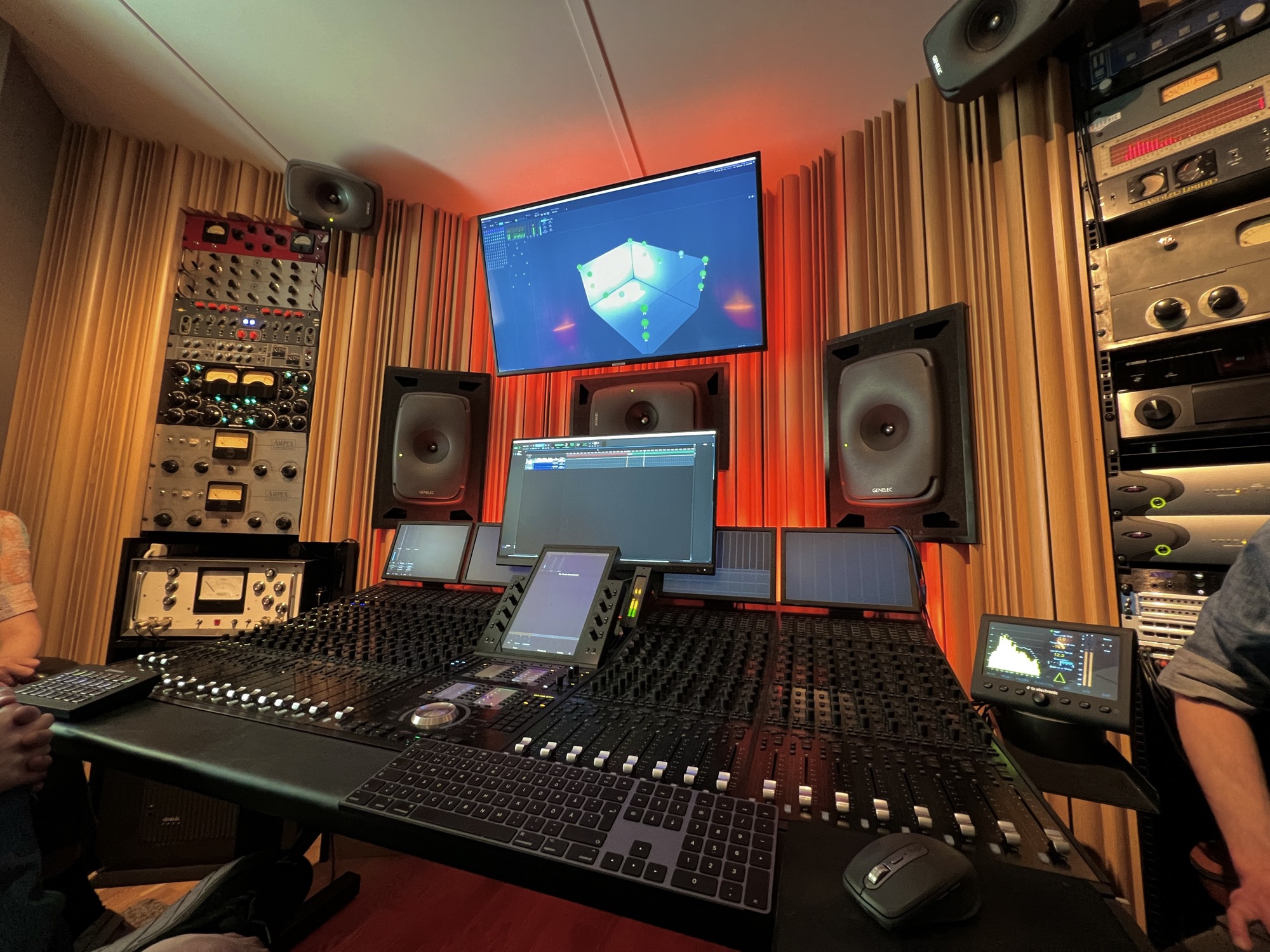Dolby Atmos had its premiere already in 2012 in a cinema in Los Angeles, now 10 years later the technology is available in more than 6000 cinemas. But Dolby Atmos is not only used for movies, since a few years ago Dolby has also pushed the standard for music. Several services such as Tidal, Amazon Music and perhaps especially Apple Music now support the standard. Apple is a company that really marketed the standard as the next big thing when it comes to music, like the step from mono to stereo. Is this hype at the same level as when Apple compared the Digital Crown input method on the Apple Watch with the multi-touch or mouse pointer? Who knows.
A few weeks ago I visited a Dolby Atmos studio in Stockholm where we got to listen to the Swedish shooting star Paula Jivés music, mixed in Dolby Atmos in the same studio we sat in. And in the studio it sounds, not entirely unexpectedly, great. Instruments are well separated, the song sounds like it’s live and both the speakers and the room disappear, it really feels like I’m sitting inside the song, for lack of better expression. At home, however, it’s a slightly different story, I often think songs lose their “closeness” and sound a bit like the “concert hall effect” on many amps. But of course there are exceptions, such as Marvin Gaye’s “What’s Going On”, which I actually think sounds better in Atmos. Then it is also like much else, a matter of taste.
So what is Dolby Atmos? As the name suggests, Dolby Atmos is one of the company Dolby’s latest inventions, which unlike stereo is owned by a company, which may not be the most optimal. Anyway, Dolby Atmos originally took the usual surround sound and added extra height channels to give a more immersive sound effect to the home theater. Atmos is also not defined by the number of channels per se, but different sounds can be placed as objects, both in different channels, but also anywhere in the room.
In the studio, Atmos songs are exported in WAV format that are hundreds of megabytes in size, but when these are then to be sent to streaming services such as Apple Music, they are converted to MP4 files that are much smaller than that. So there is no streaming service that offers lossless and Dolby Atmos at the same time at the moment. A rather interesting detail about the format is that the files in Apple Music are always converted to six channels (ie more or less 5.1 surround), but as I understand it, for example Apple’s headphones will then convert this file back to something that is more than 6 channels, but still not.
When it comes to music itself as art, Paula takes up a good point and that is that it can be interesting when, or rather if I say, artists actually start making songs for spatial sound, today songs are still created in stereo, and then mixed up to Atmos. Whether that will ever happen remains to be seen, but it’s definitely interesting to think about and what it would mean for musilk.
Something that may be worth mentioning in the discussion about whether Dolby Atmos is the future or not is the development we have seen regarding the transfer of sound from phones to headphones. Just a few years ago, we had a standard that really everyone used – the headphone jack. It has now been replaced by an increasingly fragmented landscape of different Bluetooth standards and different pairing protocols. Sure, it’s very convenient with AirPods if you only use Apple stuff, but is that the way we want to go? That speakers and headphones, which have previously worked just as well with any device, should be “locked in” to different ecosystems. I would not say that Atmos contributes with any solution to that problem, rather the opposite.
It is also a bit ironic how the quality of music has actually developed backwards in recent years, we have gone from vinyl records and CD quality, to MP3 and compressed music online. Only now, however, is CD quality starting to return, as several streaming services have begun to offer this. Many of us also listen to speakers that can only produce mono at home. Why is it like that? Time and time again, it has been shown that most people do not actually prioritize the actual quality of the sound very high, what is crucial is instead how easy something is to use – just see Sonos, Spotify and AirPods.
It’s very difficult to come up with a definitive answer and predict the future, but even though the Dolby Atmos standard has big names like Apple behind it, I have a hard time seeing that it would be about stereo as the most popular format for music. Much because it actually requires more work from artists, because who will stop providing a stereo mix? No.
–

